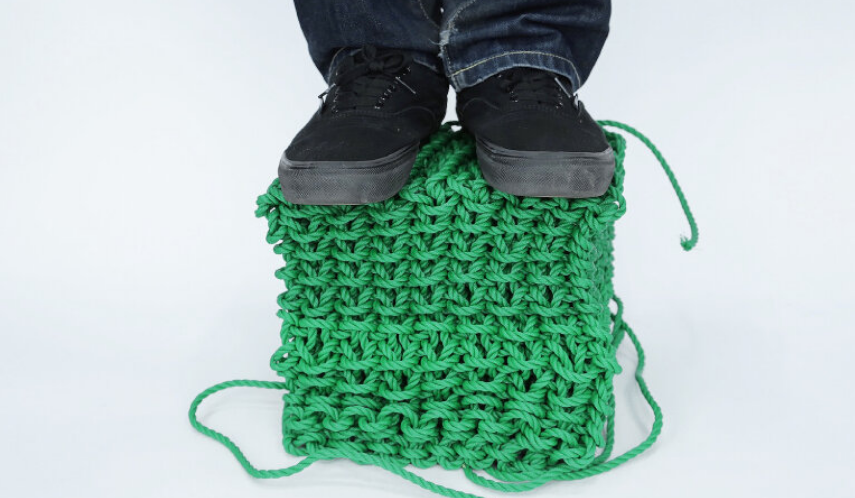Don't miss our holiday offer - up to 50% OFF!

Innovative Solid Knitting: Creating 3D Furniture and Accessories with Yarn
Researchers at Carnegie
Mellon University have developed an exciting new technology called Solid Knitting, which uses a robotic machine to create three-dimensional furniture and accessories using only elastic cord or yarn. This innovative fabrication technique differs from 3D printing in that it weaves shapes and objects using knitted layers rather than building with printed materials.
The Solid Knitting Machine
The current prototype, about the size of a clothes dryer, features rows of latch needles – hooked needles with closable latches. It’s controlled by specialized software that allows users to input custom designs for 3D knitted pieces. The machine then meticulously loops and ties the yarn or elastic cord layer by layer until the desired object is complete.
This groundbreaking research, led by Associate Professor James McCann and Ph.D. student Yuichi Hirose from Carnegie Mellon University’s Robotics Institute, was presented at the SIGGRAPH 2024 conference. The project received an honorable mention in the Best Paper competition, highlighting its significance in the field.
Material and Capabilities
The researchers opted for elastic cord as their primary material due to its flexibility and ability to create firm, solid knits. Professor McCann describes the resulting texture as similar to “a stack of felt or the sole of a shoe.” While the current prototype can only produce limited shapes and sizes, such as triangular or rectangular prisms, the team is working on expanding its capabilities.
Future Developments
Yuichi Hirose, who initiated the project in 2018, envisions creating both larger machines for furniture production and smaller ones for more precise objects. The ultimate goal is to develop a machine that can automatically produce a wide range of solid objects using only yarn or elastic cord.
Sustainability and Versatility
One of the most exciting aspects of this technology is its potential for sustainability. Users could theoretically untie and reuse the yarn from one piece of furniture to create another, reducing waste and promoting resource efficiency.
Try It Yourself
While the team continues to refine the machine, they’ve made it possible for enthusiasts to experiment with Solid Knitting techniques by hand. The researchers have released a set of hand-knitting instructions for those interested in creating their own 3D furniture, accessories, or objects using these innovative methods.
This remarkable fusion of traditional crafting techniques with cutting-edge technology opens up new possibilities in design, manufacturing, and sustainable living. As the research progresses, we may soon see a future where customizable, knitted furniture becomes a common feature in our homes and offices.